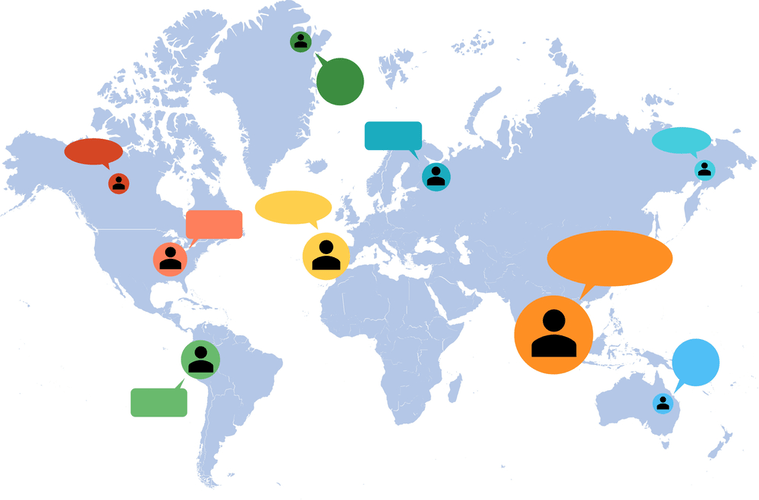Technologies and tools such as process automation, project management software, artificial intelligence (AI), data analytics, and machine learning (ML) make collaboration between teams easier and deliver actionable insights. Each type of enterprise application can be considered a “system” due to the integration with a firm’s business processes.[6] Categories of enterprise software may overlap due to this systemic interpretation. For example, IBM’s Business Intelligence platform (Cognos), integrates with a predictive analytics platform (SPSS) and can obtain records from its database packages (Infosphere, DB2).
The company might need to rethink how it’s organized or risk ending up with incompatible technology. Also, menial and manual tasks are eliminated, allowing employees to allocate their time to more meaningful work. ERP applications also allow the different departments to communicate and share information more easily with the rest of the company.
What Are the Types of ERP?
Microsoft (MSFT) has long been an industry leader, with many customers using multiple software applications from the company. You can think of an enterprise resource planning system as the glue that binds together the different computer systems for a large definition of enterprise system organization. Without an ERP application, each department would have its system optimized for its specific tasks. With ERP software, each department still has its system, but all of the systems can be accessed through one application with one interface.

There’s often an impulse to regard preventive maintenance and predictive maintenance as completely distinct entities. Unfortunately, this attempt to frame the relationship in simple terms of preventive maintenance vs predictive maintenance misses a key point. In reality, predictive maintenance is a more evolved form of preventive maintenance. If we were practicing preventive maintenance on that equipment, we might use general information about that make and model of machine to formulate rough time estimates about when regular maintenance should be carried out on it.
Next steps with enterprise software on AWS
However, moving to an ERP system will be counterproductive if the company’s culture does not adjust to the change and the company does not review how the structure of its organization can support it. These are attributes that must exist for software to work and are unlikely to fit in a specification document. Quality elements are not functional requirements, but are ways to determine acceptable operating conditions and necessary tradeoffs to get there. Like all software, a database management system (DBMS) must support the hardware platform and operating system it runs in. In order to move a DBMS to another platform, a version must be available for the new hardware and operating system.
By collecting an organization’s shared transactional data from multiple sources, ERP systems eliminate data duplication and provide data integrity with a single source of truth. The CRM module makes it possible for businesses to manage client operations, such as marketing, sales, and customer service. Users can also employ CRM in marketing operation management, including advertisements and lead generation campaigns. Earlier, in large organizations, different information systems were used to serve different business functions like sales, marketing, production, manufacturing, etc., separately. Some businesses benefit from enhanced real-time data reporting from a single source system. Accurate and complete reporting help companies adequately plan, budget, forecast, and communicate the state of operations to the organization and interested parties, such as shareholders.
Processes
Common types of enterprise software include contact centre software, business intelligence, enterprise communication, inventory management, marketing tools, online payments, and enterprise resource planning. Organizations use enterprise software to run, scale, and optimize their day-to-day operations and processes, as well as build their own unique applications. A complete ERP suite also includes enterprise performance management, software that helps plan, budget, predict, and report on an organization’s financial results. Enterprise resource planning systems are complete, integrated platforms, either on-premises or in the cloud, managing all aspects of a production-based or distribution business. Furthermore, ERP systems support all aspects of financial management, human resources, supply chain management, and manufacturing with your core accounting function.

For example, programmers and other technical IT professionals regard enterprise architecture strategies in terms of the infrastructure, application and management components under their control. However, enterprise architects are still responsible for enacting business structure analysis. An enterprise system framework permits organizations to coordinate business procedures, for example, sales, deliveries and accounts receivable, by sharing data crosswise over business capacities and employee hierarchy systems.
Technology planning
For example, a framework focused on consistency and relationships between various parts of an overarching enterprise will be more helpful to larger organizations with many moving parts compared to small ones. In this case, a framework like the Unified Architecture Framework (UAF) may work. For technical enterprise architecture descriptions, EA could revolve around the context of software architecture, systems architecture deployment types and other steps like testing. PCMag.com is a leading authority on technology, delivering lab-based, independent reviews of the latest products and services.

By bringing together and centralizing customer data, enterprises can deliver a personalized service experience that meets customer demands. Enterprise application software performs business functions such as order processing, procurement, production scheduling, customer information management, energy management, and accounting. Increasingly, deploying AI and IoT technologies in operations has resulted in continual optimization of both the assets and activities that drive the industrial sector.
ERP Weaknesses
IBM Maximo® improves scheduling, vendor management and both workflow and financial reporting — all without paper. Usage-based preventive maintenance is triggered by the actual utilization of an asset. This type of maintenance takes into account the average daily usage or exposure to environmental conditions of an asset and uses it to forecast a due date for a future inspection or maintenance task. Today, ERP systems are critical for managing thousands of businesses of all sizes and in all industries. To these companies, ERP is as indispensable as the electricity that keeps the lights on. In such cases, the software may need to be customized to satisfy the requirements of the organizations.
- The software helps users in developing strategic roadmaps and architectures that enable business and IT alignment.
- In such cases, the software may need to be customized to satisfy the requirements of the organizations.
- Get started with enterprise software on AWS by creating a free AWS account today.
- Systems management includes a variety of functions for managing computers in a networked environment.
- However, moving to an ERP system will be counterproductive if the company’s culture does not adjust to the change and the company does not review how the structure of its organization can support it.
- Enterprise resource planning (ERP) manages and integrates business processes through a single system.
- It consists of the architectures of individual systems and their relationships in the perspective of an organization.
Notable features include inventory, purchasing, shipping, tracking, refunds, claim processing, and supplier scheduling. ERP systems usually fail to achieve the objectives that influenced their installation because of a company’s reluctance to abandon old working processes. Some companies may also be reluctant to let go of old software that worked well in the past.
Accounting and Finance
First, there is an ever-increasing demand for storage due to the Internet, document management and data warehousing as well as increasing daily transaction volume in growing companies. Secondly, finding the time window in a 7×24 operation to copy huge databases for backup, archiving and disaster recovery has become more difficult. Database administrators must select the DBMS or DBMSs that efficiently process the daily transactions and also provide sufficient horsepower for decision support.

